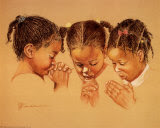I am really wondering why the Comelec seems to be at a loss on how to classify candidacies. The words they use are highly political. Although voting is a political exercise, yet determination of those who are to be put up as candidates must acquire a degree of scholarly evaluation, some kind of objectivity -- meaning to say the following factors are to be studied and considered first upon the submission of the candidates' application papers, namely:
1. education;
2. experience;
3. capacity to develop a program of action once elected;
4. capacity to communicate with clarity, whether using verbal or sign language; and
5. the endorsements of other groups or individuals are secondary, among others,
Hence, in this manner, the individual's application is studied and treated with respect.
But the best way really is to interview the individual.
I was told by a Comelec lawyer that they assess candidacies by asking for the dossier of the individual/s from the military and the police. I really do not know how that can help at all, knowing that these sectors are after those who destabilize the State, primarily. Hence their data could be one-sided. Besides the dossiers may not be updated so that the developments in the mind and life of the individual may not have been considered anymore.
Anyway, this is my concluding statement: any assessment of candidates' application to run for a political position whether national or local shall result only in three kinds:
1. Qualified candidate meaning the application satisfies all the requirements (excluding capacity to run a campaign as this is a highly individualistic style)
2. Disqualified candidate -- meaning to say the candidate has pending cases; and
3. Unqualified candidate
This is the scholarly way of labeling candidates. By using these terms, the Comelec does not diminish the humanity of the applicants for candidacy to position. The Comelec recognizes that every Filipino citizen, male or female has the right to aspire to be elected for a political position and serve the country. .
Fernando Amorsolo Painting shows Marcela Marino de Agoncillo, Lorenza Agoncillo, and Delfina Herbosa de Natividad in Hong Kong sewing the flag first flown in battle on May 28, 1898. It was formally unfurled during the Proclamation of Philippine Independence and the flag of the First Philippine Republic, on June 12, 1898 by President Aguinaldo.







No comments:
Post a Comment